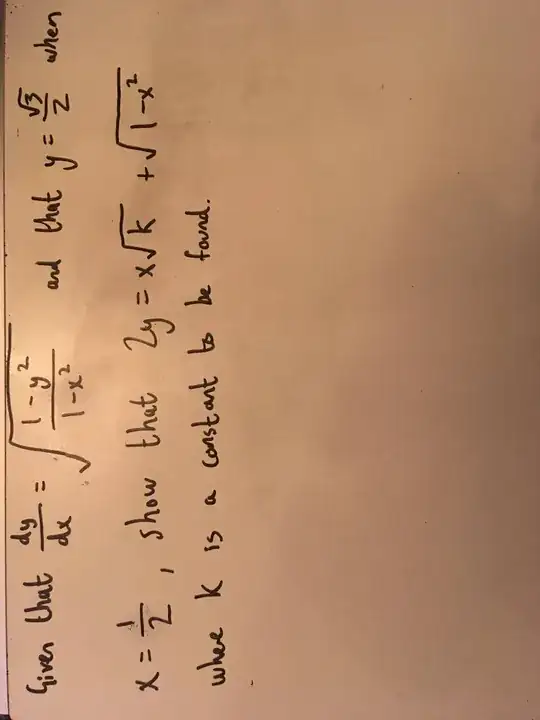I have been trying to solve this problem for 15 minutes and I’m not any closer to a solution (in an exam, we are expected to do questions like this in 6 minutes or less which is why I’m asking now). I can’t reach the expression shown in the question. Any help would be greatly appreciated. Just to clarify, you also need to find the value of k
So far I have tried to integrate (1-x^2)^-0.5 dx and to perform the same action for the other term, but I get an answer containing arc sins and sins, and I’m not sure if this is the right course of action or not, it’s just that it doesn’t help me get to the expression required in the question. I keep getting y = sin(C+arcsin(x)).